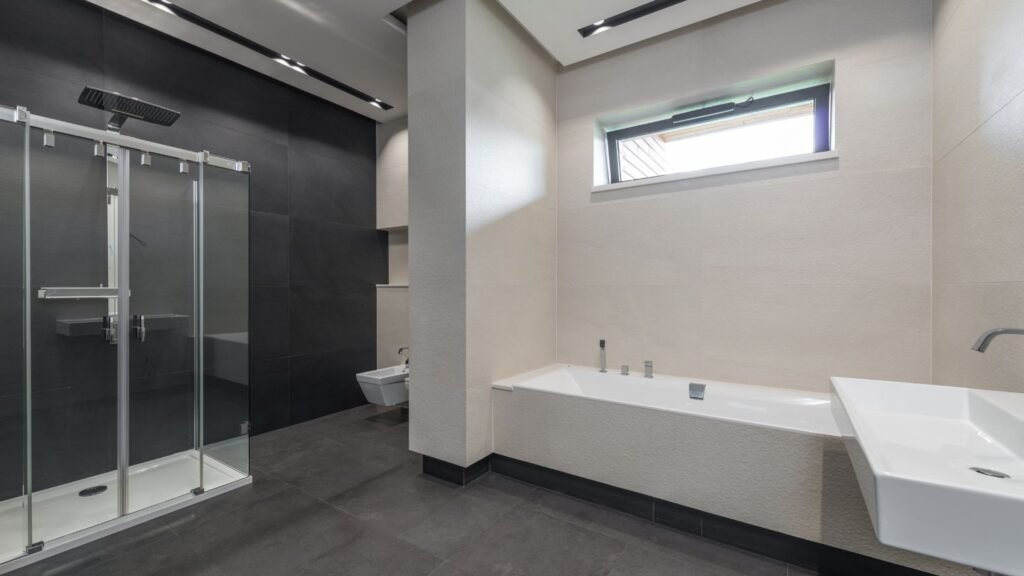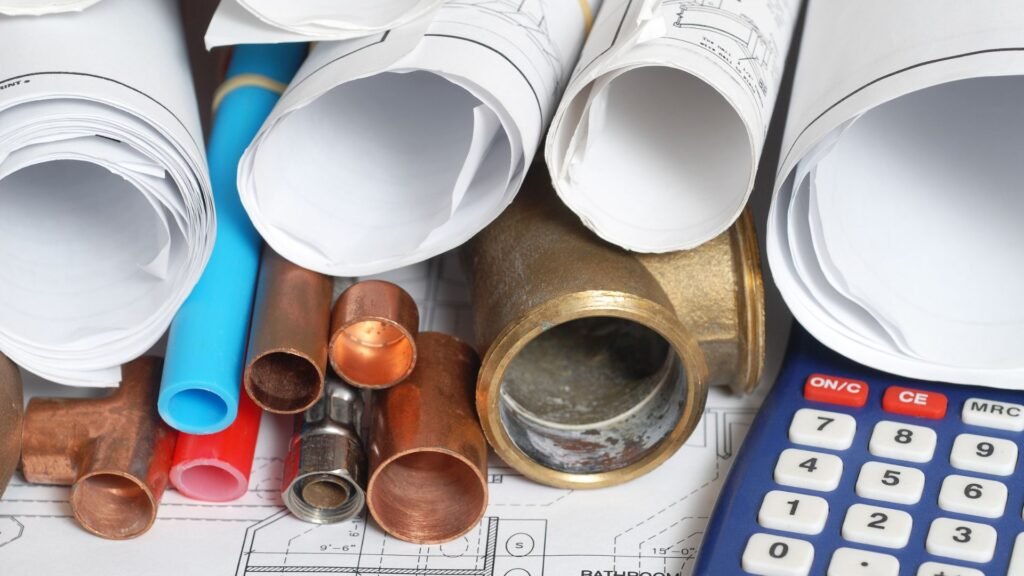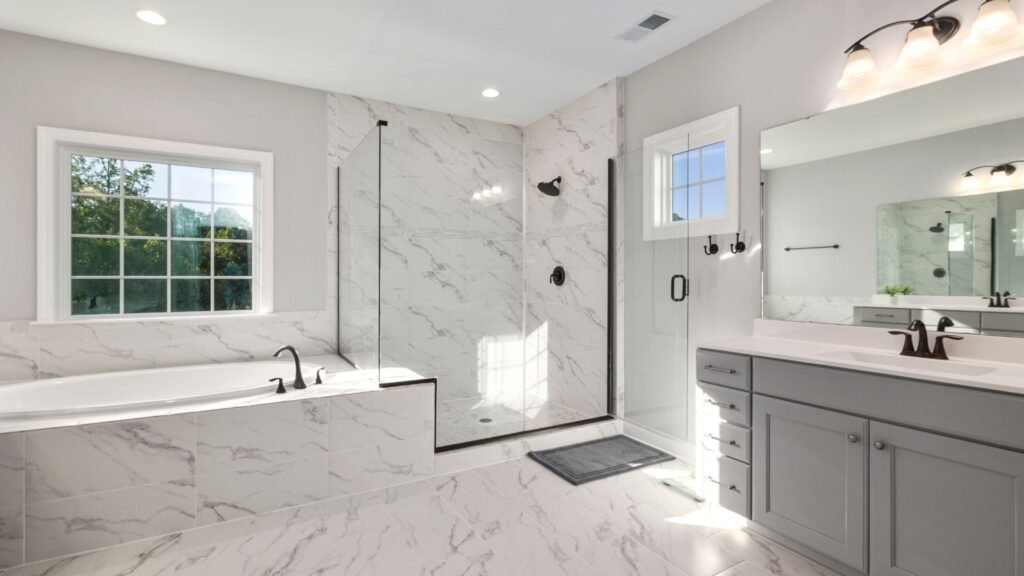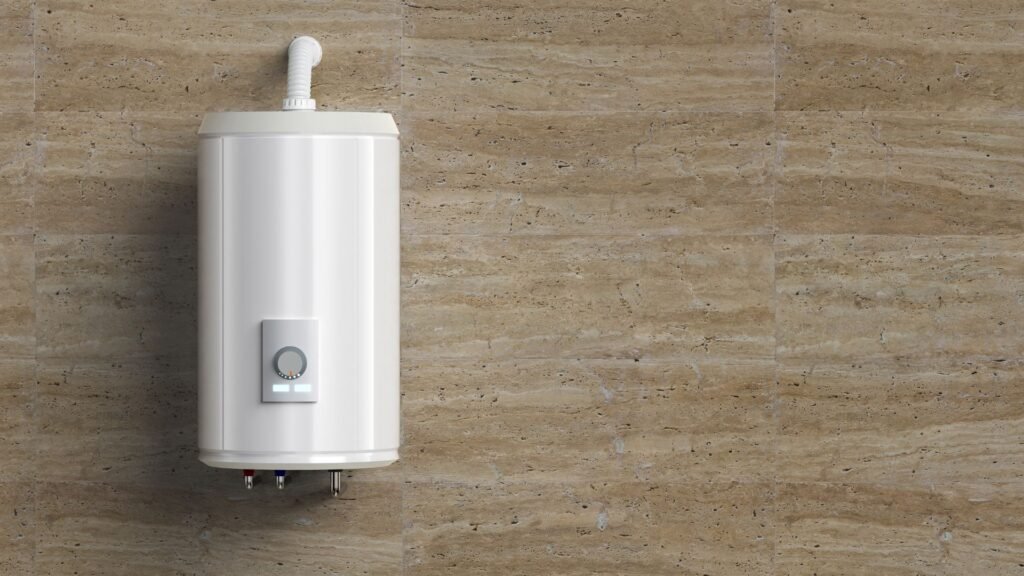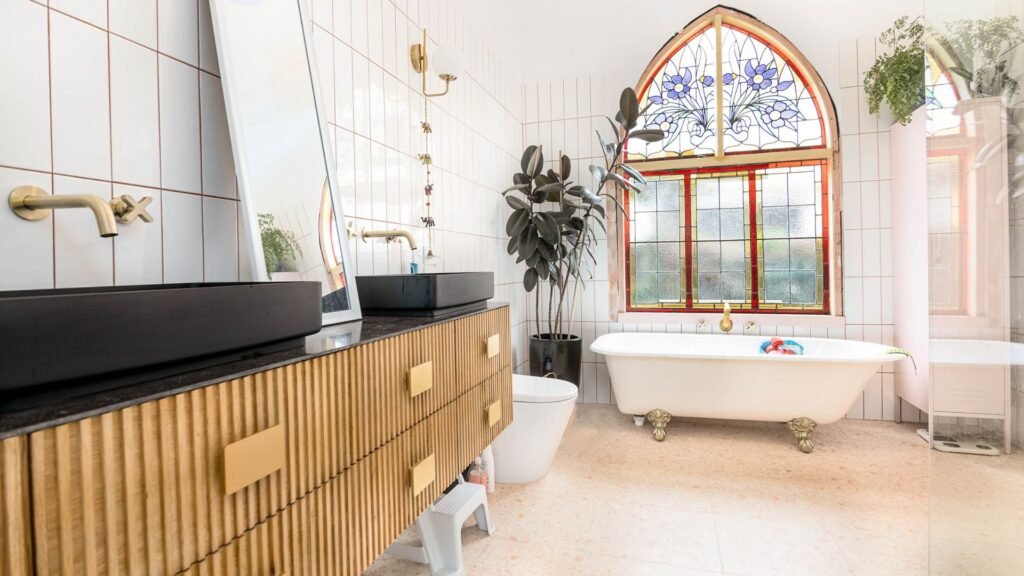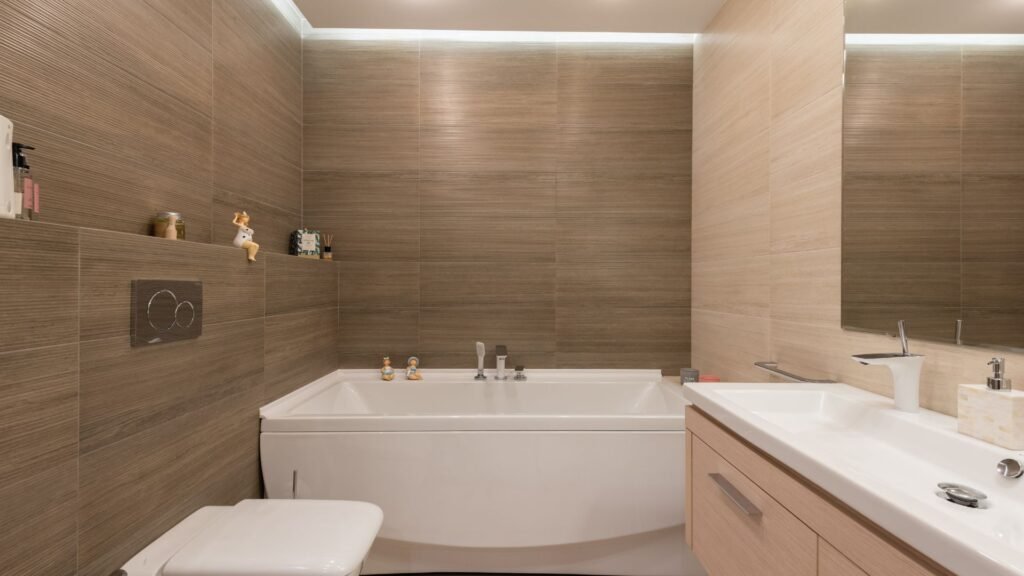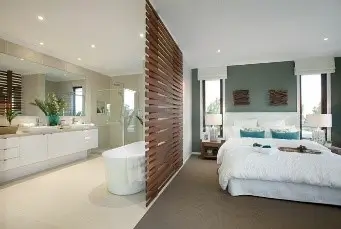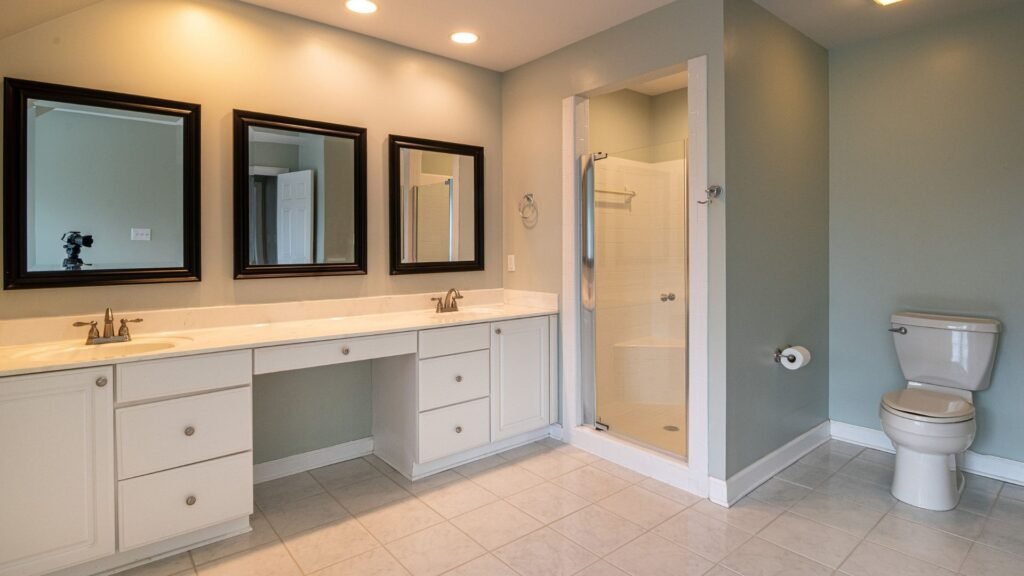Welcome to our guide on maximizing space in small bathroom renovations right here in NZ—where every square metre matters and smart design goes a long way. Whether you’re living in a classic Kiwi villa, a compact apartment, or just dealing with a tight bathroom layout, creating a space that’s both functional and stylish can feel like a real challenge. But don’t worry—you don’t need a massive footprint to achieve a bathroom that works beautifully for you and your whānau. In this post, we’ll walk you through practical, people-first renovation tips that make the most of your space, from clever layout tweaks and smart storage ideas to local-friendly design inspiration that suits New Zealand homes. Let’s dive in and help you turn your small bathroom into a big win.
To maximize space in a small bathroom renovation in NZ, focus on smart layout choices like wall-mounted vanities, sliding doors, and compact fixtures. Use light colours, large tiles, and mirrors to create the illusion of more space. Incorporate recessed shelving and vertical storage to reduce clutter. Prioritize functionality and work with existing plumbing to keep costs down in New Zealand homes.
Table of Contents
Know Your Space: Planning Comes First
Before you dive into choosing tiles or fixtures, the first and most important step in any small bathroom renovation is understanding the space you’re working with. Good planning lays the foundation for a functional, stylish bathroom—especially when space is limited. Here’s how to approach this crucial phase of the renovation process with confidence and clarity.
Importance Of Measuring Everything Accurately
Accurate measurements are absolutely essential when renovating a small bathroom. With limited space, every millimetre counts. Measure not only the room’s overall dimensions but also the location of key elements like windows, doors, plumbing points, and structural features. Make note of ceiling height, wall angles, and any potential obstructions that could affect the placement of fixtures. A simple measuring error can lead to big headaches—like a vanity that blocks a door or a toilet that doesn’t meet code. Taking the time to get these details right from the beginning can save money, stress, and costly adjustments later.
How To Assess What’s Working And What’s Not
Next, take a step back and evaluate your current bathroom. What do you love about it? What frustrates you daily? Maybe the shower feels cramped, storage is lacking, or poor lighting makes it feel even smaller. On the other hand, maybe your current layout has good flow or natural light that’s worth keeping. Make a list of must-haves and nice-to-haves based on your lifestyle. This honest assessment will help you focus your renovation on improvements that truly matter—rather than just following trends.
Basic NZ Renovation Considerations
When renovating in New Zealand, there are a few practical factors to keep in mind. Older homes, particularly villas and bungalows, often have timber-framed walls, outdated plumbing, or non-standard measurements that can complicate renovations. You’ll also need to consider local building regulations. While cosmetic changes like replacing tiles or updating fixtures might not require consent, any structural changes or plumbing alterations usually will. It’s best to check with your local council or speak with a licensed building practitioner to understand what’s required for your specific project.
Working With Existing Plumbing To Save On Costs
One smart way to stay on budget during a small bathroom renovation is to work with the existing plumbing layout. Moving toilets, showers, or vanities can be expensive, especially in older homes where plumbing systems may be outdated or difficult to access. By keeping key fixtures in their current positions, you can focus your resources on improving the look and functionality of the space without blowing your budget. If your existing layout is workable, small tweaks—like upgrading to a wall-hung vanity or installing a frameless shower—can still make a big impact without requiring costly plumbing changes.
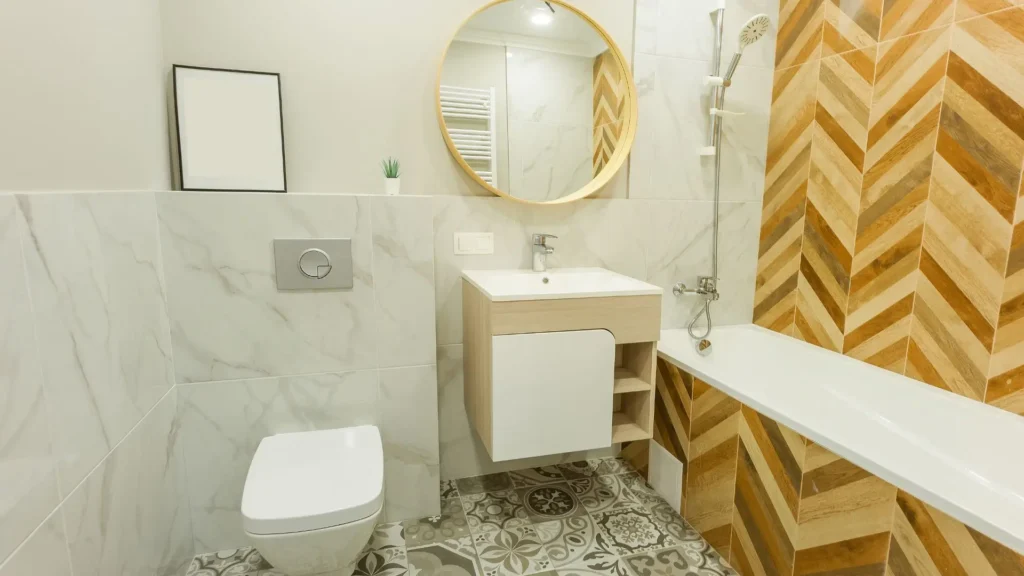
Layout Strategies That Make A Big Difference
When you’re working with a small bathroom, every centimetre counts. The layout isn’t just about where things fit—it’s about how the space flows and functions day to day. In New Zealand homes, especially older ones, small bathrooms are common, but the right layout can transform even the tightest room into a space that feels larger, more practical, and easier to use. Below are several layout strategies that can have a real impact on how your bathroom looks and works.
Wall-Hung Toilets: Save Space And Clean Easier
Wall-hung toilets are a smart space-saving choice. Because the cistern is hidden inside the wall and the bowl is elevated off the floor, they instantly make the room feel more open. This setup also creates a sleek, modern look and makes cleaning the floor much easier. In smaller bathrooms, where every bit of visual space matters, a wall-hung toilet can give the illusion of more room without compromising functionality.
Corner Vanities: A Smart Use Of Unused Space
Traditional vanities can take up valuable wall space and sometimes create bottlenecks in small bathrooms. A corner vanity tucks neatly into an unused corner, freeing up more of the main walkway and creating a better flow. This type of vanity also opens up opportunities to use the wall above for additional storage or a mirror, which can reflect more light and make the room feel bigger.
Sliding Doors Vs Swing Doors: Rethink Your Entry
In tight spaces, the way your door opens can have a surprisingly big impact. Standard swing doors take up floor space and can block access to fixtures. A sliding or pocket door eliminates this problem by tucking into the wall or sliding across the outside. This simple change can free up usable space inside the bathroom and make the layout feel much more open—particularly helpful in apartments or older homes with narrow hallways.
Wet Room Designs: Seamless And Space-Saving
Wet rooms, where the shower is integrated into the overall floor space without a separate enclosure, are becoming increasingly popular in compact New Zealand bathrooms. Not only do they eliminate bulky shower trays or partitions, but they also create a continuous, streamlined surface that makes the room feel more expansive. Wet rooms are especially ideal when paired with quality waterproofing and underfloor heating, which are essential for comfort and durability.
Emphasize Flow And Functional Zones
Good bathroom design is about more than where things go—it’s about how you use the space. One way to maximize a small layout is to create functional zones: a clear area for showering, a space for the toilet, and a separate area for the vanity. This zoning helps prevent the room from feeling cramped or chaotic and makes it easier to move around. If you’re sharing the bathroom with others, zoning also makes the space more usable by more than one person at a time.
Consider Kiwi Building Constraints
When planning your layout, it’s important to consider the realities of renovating in New Zealand. Many older Kiwi homes have timber-framed walls, unusual plumbing placements, or limited ceiling heights, which can restrict how much you can move things around. Working with the existing plumbing lines can save money and reduce the risk of issues down the track. It’s always a good idea to consult with a local renovation expert or builder familiar with NZ housing standards to ensure your layout is both clever and compliant.
A well-thought-out bathroom layout can completely change how the space feels—without needing to knock down walls or overspend. Whether you’re designing a guest powder room or the main family bathroom, focusing on smart layout solutions tailored to New Zealand homes can help you get the most from every inch.
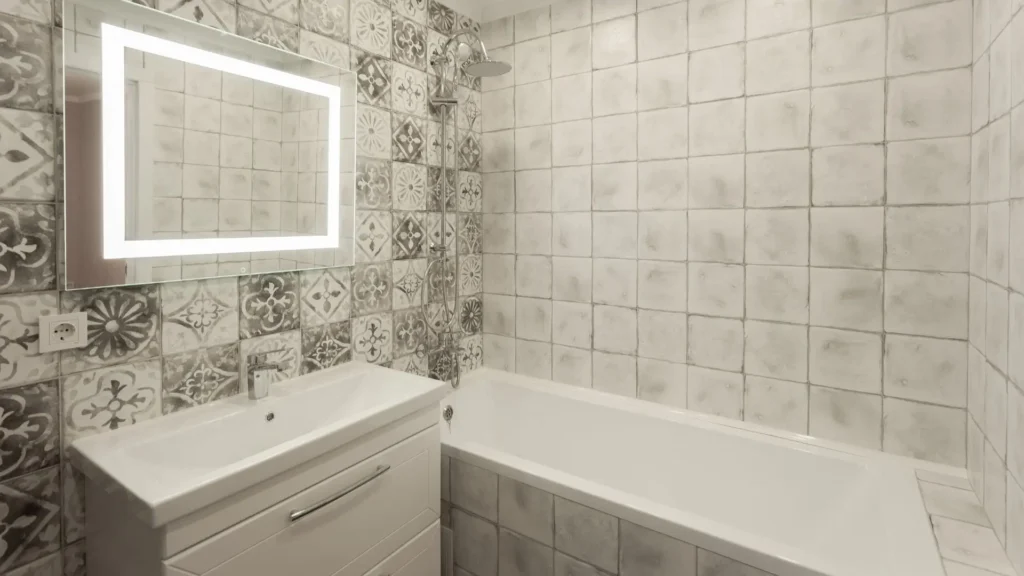
Storage Solutions Without Bulk
When it comes to small bathroom renovations in New Zealand, finding storage that adds functionality without adding visual weight is key. In compact spaces, every centimetre counts, so it’s important to choose storage solutions that feel light, efficient, and tailored to the way you use the room. Below are practical and stylish ways to integrate storage without cluttering your space or compromising the overall aesthetic.
Recessed Shelving And Wall Niches:
One of the smartest ways to increase storage in a small bathroom is by building it into the walls. Recessed shelves and shower niches make use of otherwise unused wall cavities, allowing you to store toiletries, towels, and bathroom essentials without protruding into the room. They’re perfect for placing shampoo bottles, skincare products, or even a few decorative items—keeping everything within reach while maintaining a clean look. These are especially effective in showers or above bathtubs where space is tight but accessibility is crucial.
Vanity With Drawers Vs Cupboards:
When choosing a vanity for a small space, drawers almost always win over traditional cupboards. Drawers make it easier to organize items and access them without digging through a deep, dark cabinet. Opt for a slimline vanity with soft-close drawers to maximize functionality and comfort. Drawers can be compartmentalized for toiletries, hair tools, and cleaning supplies—making the most of every bit of space in a way that’s user-friendly and tidy.
Over-Toilet Storage Ideas:
The area above your toilet is often wasted space, but it has excellent potential for vertical storage. Consider installing a shallow shelf, cabinet, or open shelving unit above the toilet to store extra toilet paper, hand towels, or small decorative pieces. If you want a cleaner, more built-in look, you could even opt for custom cabinetry that blends into the wall colour, keeping the space feeling open while adding valuable storage.
Floating Vanities And Open Shelves:
Floating vanities are ideal for small bathrooms because they free up visible floor space, making the room feel more open. The added airiness doesn’t just look good—it can also make cleaning easier. Pair your floating vanity with a few strategically placed open shelves to store folded towels, baskets, or daily-use products. Keep it minimal, though; open shelves should be styled neatly to avoid a cluttered look. Choose wood, glass, or powder-coated steel to match your design style.
Built-In Cabinetry With Mirrored Fronts:
Combining function with design, mirrored cabinets offer both storage and an illusion of space. A built-in mirrored cabinet above the sink or vanity adds hidden storage while bouncing light around the room—helping it feel brighter and more expansive. In tight bathrooms, every reflective surface helps, and mirrored storage units are an excellent way to get two functions in one compact design.
Checklist Of Space-Saving Storage Upgrades:
If you’re planning your small bathroom renovation and want to make sure you’re not missing any opportunities to save space, here’s a quick list to help guide your decisions:
- Install a recessed shower niche for toiletries
- Choose a vanity with drawers over cupboards
- Add a floating shelf or cabinet above the toilet
- Use mirrored wall cabinets to combine storage and reflection
- Opt for a floating vanity to create a sense of openness
- Add open shelving only where it enhances functionality
- Use vertical wall space whenever possible
- Consider tall, narrow cabinets instead of wide ones
Smart storage in small bathrooms is all about being intentional. You don’t need more furniture—you just need better planning. With the right layout and a few clever choices, your bathroom can feel bigger, work better, and still look beautiful.
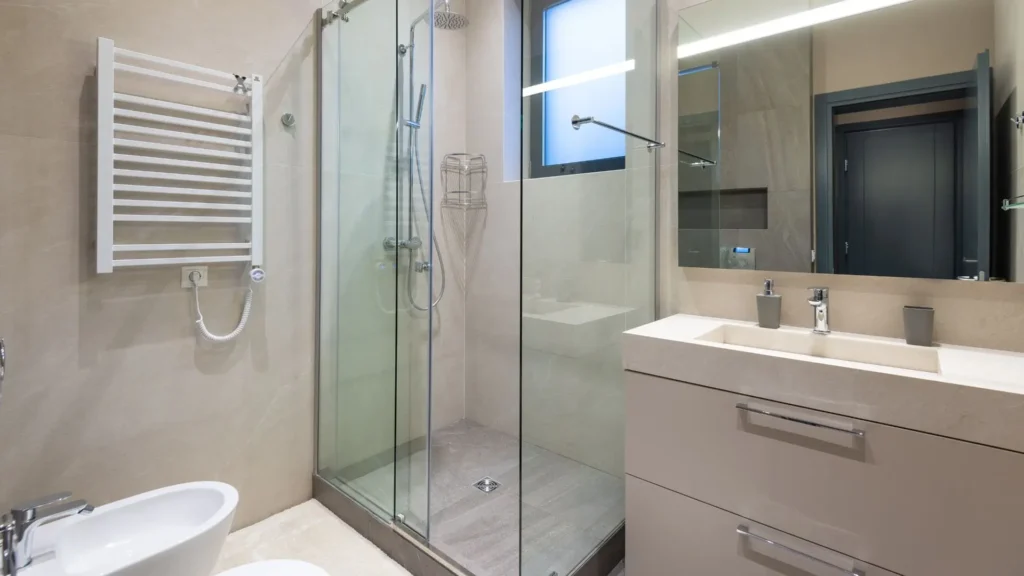
Light, Colour & Materials: Tricks To Open Up The Room
When you’re working with a small bathroom, every design decision counts—especially when it comes to how light, colour, and materials are used. These elements play a powerful role in how spacious a room feels, not just how it measures on paper. In many New Zealand homes, where bathrooms can often be compact, understanding how to visually expand the space without changing the floor plan is key. Below, we explore practical, design-savvy tricks to make your small bathroom look and feel more open, airy, and inviting.
Use Light, Bright Colours To Reflect Space
Light colours are a go-to strategy when it comes to making any small space feel larger, and bathrooms are no exception. Whites, soft greys, pale blues, and neutral pastels create a clean, calming effect and help reflect natural and artificial light throughout the room. These tones work particularly well in NZ bathrooms where natural light can be limited, especially in winter months. Painting the walls and ceiling the same light colour can help reduce visual breaks, creating the illusion of continuous space. If you’re after a bit more character, consider incorporating texture or subtle patterns rather than going darker or overly bold.
Choose Glossy Tiles Over Matte For Light Reflection
When selecting tiles, both finish and size matter. Glossy tiles have the advantage of reflecting more light, which can help brighten the entire space—especially when used on walls or in shower enclosures. While matte tiles can offer a modern, understated look, they tend to absorb light and may make a small room feel more enclosed. In contrast, high-gloss finishes bounce light around, visually opening up the room. Also, choosing larger tiles reduces the number of grout lines, helping the walls or floors appear less busy and more continuous—another trick to make the space feel more expansive.
Use Mirrors Strategically To Expand The Room
Mirrors are one of the most effective ways to visually double the size of a bathroom. A large, frameless mirror above the vanity or a mirrored cabinet not only adds a functional element but also reflects both natural and artificial light. This creates depth and gives the impression of a wider, more open space. In small New Zealand bathrooms, especially those with limited window size or awkward layouts, a well-placed mirror can completely change the feel of the room. For extra impact, consider extending a mirror across an entire wall or incorporating it into cabinetry for a dual-purpose solution.
Let In Natural Light Wherever Possible
Maximizing natural light can make a huge difference in how a small bathroom feels. If your bathroom has an exterior wall, adding or enlarging a window is one of the most impactful upgrades—just be sure to maintain privacy with frosted or textured glass. Skylights or solar tubes are another excellent option, especially in upper-level or roof-accessible homes. These features flood the space with soft daylight without taking up any wall space. Even just replacing heavy window coverings with lighter, translucent ones can allow more daylight in while maintaining privacy.
Layer Lighting With Smart Placement
Natural light alone isn’t always enough—especially in the evenings or on overcast days—so your bathroom’s artificial lighting also plays a critical role. Start with ambient ceiling lighting, but don’t stop there. Add task lighting around mirrors with wall sconces or backlit mirrors for better visibility. Accent lighting, like LED strips under vanities or along shelves, helps create depth and interest. These subtle light sources not only improve functionality but also prevent shadows from making the room feel smaller. Smart lighting placement helps every corner feel brighter, cleaner, and more open.
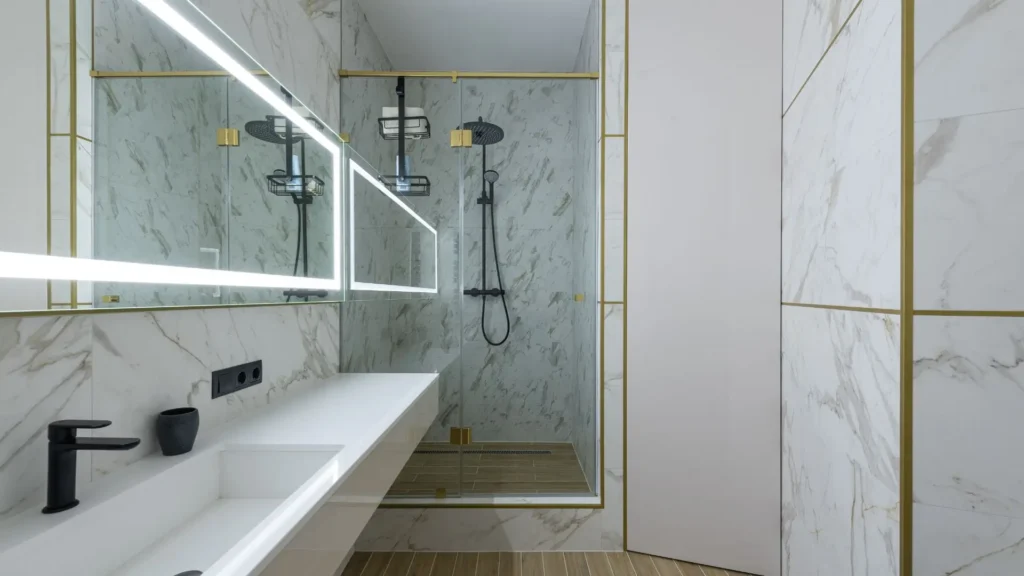
Fixtures & Fittings: Small But Mighty
When it comes to small bathroom renovations in New Zealand, choosing the right fixtures and fittings can make a massive difference. These smaller design elements often have the biggest impact in terms of usability, flow, and visual space. The key is to select pieces that are compact, efficient, and designed with multi-functionality in mind—all while reflecting the style of your home.
Compact Toilets And Slimline Basins
In tight bathroom layouts, bulky fixtures simply don’t work. That’s where compact toilets and slimline basins come in. These space-saving alternatives are designed to fit snugly without sacrificing comfort or performance. Look for toilets with in-wall cisterns or shorter projections that free up valuable floor area. Wall-mounted basins or narrow-depth vanities can open up floor space while still offering enough surface for daily essentials. These are especially ideal for older NZ homes where the footprint is already limited.
Frameless Shower Screens Or Glass Dividers
Instead of boxed-in showers with thick frames or raised lips, consider frameless glass screens or clear dividers. These options visually extend the space, reduce barriers, and allow more light to move freely through the room. A walk-in shower with a single pane of glass is a popular choice for modern Kiwi bathrooms—it’s sleek, easy to clean, and perfect for compact layouts.
Wall-Mounted Taps To Free Up Bench Space
Wall-mounted taps are not just a design trend—they’re incredibly practical in small spaces. By lifting the hardware off the vanity, you gain extra bench space and reduce visual clutter. This minimalist approach pairs well with slimline basins and allows for a cleaner, more open feel. It also makes surface cleaning faster, which is a bonus for busy households.
Multi-Functional Fittings For Maximum Efficiency
When space is limited, every item should earn its place. Multi-functional fittings—like a heated towel rail that also functions as a shelf—are brilliant space-savers. Consider mirrors with built-in LED lighting or storage, or even dual-flush toilets with a hand basin built into the top. These clever combinations reduce the need for extra furniture or accessories, keeping the bathroom feeling streamlined and purposeful.
Local Options And NZ-Friendly Solutions
There are plenty of trusted New Zealand suppliers offering compact, high-quality bathroom fixtures ideal for small spaces. Brands like Methven, Robertson Bathware, and Plumbing World offer a variety of space-conscious designs that balance style, function, and Kiwi preferences. Choosing local also means easier access to after-sales support and fittings that comply with NZ standards.
In small bathroom renovations, smart fixture choices don’t just make your space look better—they make it work better. By focusing on practical, multi-use elements and a thoughtful layout, you can create a bathroom that feels much larger than it is.
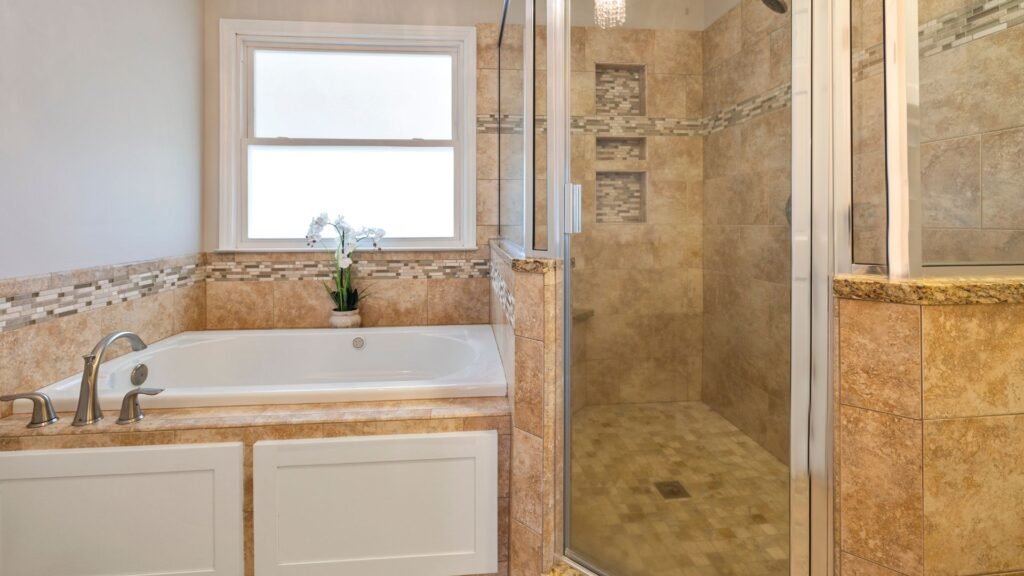
Budgeting & Prioritising: What To Splurge Or Save On
When tackling a small bathroom renovation in New Zealand, it’s easy to get caught up in design trends and overlook what really matters—where to invest your budget for maximum impact. Whether you’re working with a tight renovation budget or simply want to be smart with your spending, knowing what to splurge on and what you can save on makes all the difference. The key is to focus on functionality, longevity, and value.
Where Spending Makes The Biggest Difference
If there’s one place you shouldn’t cut corners, it’s waterproofing. New Zealand homes, particularly older ones, can be prone to moisture issues. Investing in high-quality waterproofing ensures that your renovation lasts longer and prevents costly repairs down the line. Likewise, proper ventilation is crucial in a small bathroom. A good extractor fan helps prevent mould and mildew, which is not only a health concern but can also damage surfaces over time. These structural essentials aren’t the most glamorous parts of a renovation, but they’re absolutely worth the investment.
Another smart area to allocate more of your budget is the fixtures you use every single day—like taps, shower fittings, and toilets. Choose durable, water-efficient options from trusted brands. While they may cost more upfront, they’ll save money in the long term through fewer repairs and lower water usage.
Things You Can DIY Vs What To Leave To The Pros In NZ
DIY can be a great way to stretch your budget, but only if it’s done right. Painting walls, assembling flat-pack vanities, or installing shelves are all tasks that a confident DIYer can take on. Swapping out hardware like towel rails, mirrors, or cabinet handles can also add fresh style without professional help.
However, in New Zealand, plumbing and electrical work should always be left to licensed professionals. Not only is it a legal requirement in most cases, but doing it yourself can lead to safety risks or issues with insurance if something goes wrong. Similarly, waterproofing is best handled by experienced tradespeople to ensure it meets local building standards.
If you’re ever in doubt, it’s worth getting a quote—many professionals are happy to take on just the technical parts of a project while you handle the rest.
Tips On Finding Value With Local Suppliers Or Clearance Items
You don’t always have to sacrifice quality to save money. One of the best ways to find value is to shop with local suppliers, many of whom offer clearance sales, end-of-line discounts, or seasonal promotions. Look out for local trade shows or liquidation sales from showrooms, where you might find premium fixtures at heavily reduced prices.
Don’t overlook the value of refurbished or ex-display items either. Many bathroom supply stores in New Zealand offer gently used or demo pieces at a discount, and they’re often in near-perfect condition.
Additionally, consider shopping around regional suppliers outside of major cities, as their pricing can sometimes be more competitive. Just be sure to factor in delivery fees if you’re buying online.
Finally, always compare quotes and ask suppliers if they offer price matching or bundle deals—it’s a simple question that could save you hundreds.

Real-Life NZ Small Bathroom Ideas
When it comes to renovating a small bathroom in New Zealand, there’s no one-size-fits-all approach. Every home tells a different story—whether it’s a classic villa in need of a refresh, a compact city apartment craving functionality, or an eco-conscious home where sustainability meets simplicity. Below, we explore three common small bathroom renovation styles seen across Aotearoa, along with what works well in each and how thoughtful design choices can truly transform a space. These real-life examples are here to spark inspiration and help you see the full potential of your own project—no matter the size.
The Villa Update
Many older New Zealand homes, particularly weatherboard villas and bungalows, come with small bathrooms tucked into tight corners. These bathrooms often feature dated layouts, basic fittings, and limited natural light. But with the right approach, a villa bathroom can be reimagined into a bright, welcoming retreat.
What Works Well:
- Retaining original charm while upgrading function
- Installing a clawfoot bath with a wall-mounted shower to save space
- Using tongue-and-groove wall panelling painted white or soft sage for character
- Opting for a compact wall-hung vanity with built-in storage
Before/After Idea:
A narrow, dim villa bathroom with pink 70s tiles was updated with classic white subway tiles, a frameless glass shower, and a skylight that brought in natural light—instantly making the room feel double its size.
Modern Apartment Reno
Apartment living in New Zealand often comes with compromises on space. Bathrooms in newer builds or city apartments are usually functional but lack warmth or storage. A modern renovation can completely change the atmosphere, making a basic bathroom feel sleek, stylish, and practical.
What Works Well:
- Using large format tiles with minimal grout lines to create a streamlined look
- Incorporating a wall-mounted vanity with mirrored storage above
- Choosing neutral tones like soft greys or taupe to add depth without closing the space in
- Installing a walk-in shower with a fixed glass panel to open up the room visually
Before/After Idea:
A cramped, all-white apartment bathroom was transformed with matte grey tiles, black tapware, and a floating oak vanity. The visual contrast made the space feel modern and curated, while clever lighting added warmth.
Eco-Conscious Minimalist
For those focused on sustainability, the eco-conscious minimalist style is growing in popularity across New Zealand. These bathrooms emphasize natural materials, energy efficiency, and a clutter-free approach—perfect for small spaces where every detail counts.
What Works Well:
- Using bamboo or sustainably sourced timber for shelving or vanities
- Choosing low-flow showerheads and dual-flush toilets to reduce water usage
- Installing solar tube skylights or LED lighting for energy efficiency
- Keeping the palette simple—think whites, soft greens, or stone tones—to maintain a sense of calm
Before/After Idea:
An outdated bathroom with vinyl flooring and plastic fittings was renovated using recycled timber features, a concrete basin, and a rainwater-fed toilet system. The result was not only eco-friendly but also visually stunning in its simplicity.
These small bathroom ideas showcase what’s possible in different types of New Zealand homes. Whether you’re updating a heritage villa, refreshing a modern apartment, or aligning your space with sustainable values, the key is thoughtful planning and design that fits your lifestyle. Each renovation tells a unique story—but the goal is always the same: to create a space that works better, feels bigger, and reflects who you are.
Ready to transform your small bathroom into a space that feels bigger, brighter, and built just for you? Let’s make it happen. Explore our renovation services and discover how we can help you make every square metre count.
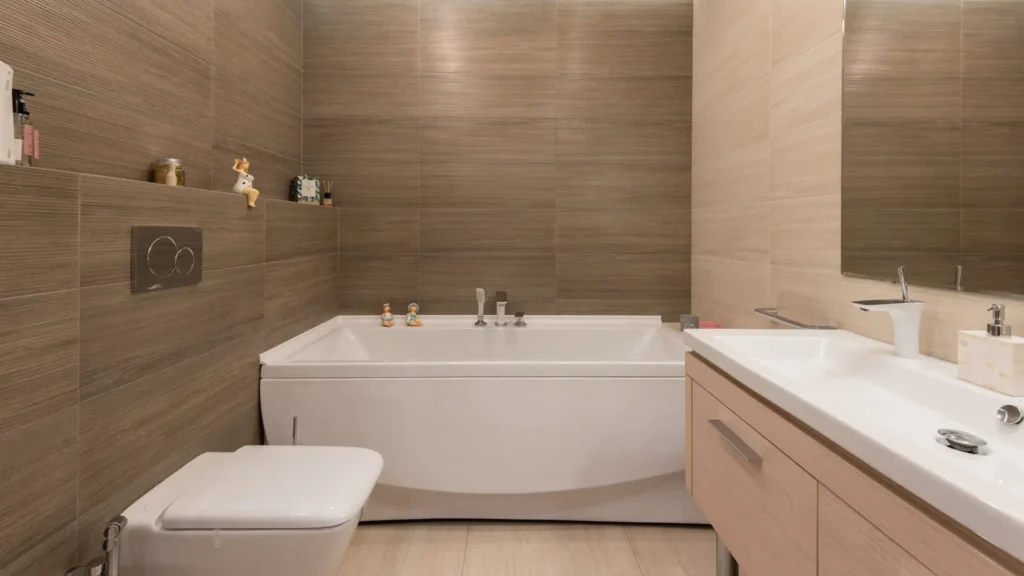
FAQs: About Maximizing Space In Small Bathroom Renovations NZ
How can I make my small bathroom look and feel bigger?
You can make a small bathroom feel bigger by using light, neutral colours, adding large mirrors to reflect light, and installing space-saving fixtures like wall-mounted toilets or floating vanities. Maximizing natural light and using glass shower screens instead of curtains can also visually open up the room.
What’s the best layout for a small bathroom?
The best layout depends on your space, but generally, you’ll want to keep plumbing lines where they are to save money. Consider placing the toilet and vanity along one wall, using a corner shower or walk-in wet room layout, and choosing sliding or pocket doors to free up floor space.
Are floating vanities better for small bathrooms?
Yes, floating vanities are a great option for small bathrooms. They create a sense of openness by revealing more of the floor area, and many come with smart storage features like drawers or under-shelf options to keep clutter at bay.
What colours work best in a small bathroom?
Light colours such as whites, soft greys, pastels, or beige tones work best. They reflect more light, making the room feel airy and spacious. Using the same colour on walls and tiles can also reduce visual breaks, helping the space feel more unified.
How can I add storage to a small bathroom without making it feel cramped?
Look for vertical space and recessed areas. Wall-mounted shelves, built-in niches in showers, over-the-toilet cabinets, and mirrored medicine cabinets are excellent ways to add storage without taking up valuable floor space.
What kind of lighting is best for a small bathroom?
Good lighting is essential. Combine natural light (like skylights or frosted windows) with layered lighting—ambient ceiling lights, wall sconces by the mirror, and under-vanity LED strips. This helps eliminate shadows and creates a more open feel.
Is it worth doing a full renovation on a small bathroom in NZ?
Absolutely—especially if the current layout is inefficient or the fittings are outdated. A smart renovation can significantly increase both daily comfort and property value. Just be sure to consider consent requirements and work with professionals when needed.
Can I renovate a small bathroom on a budget?
Yes. You can save money by keeping the existing layout, choosing affordable but quality materials, and doing some of the cosmetic work yourself. Focus your budget on essentials like waterproofing, good ventilation, and durable fittings.
Do I need council consent for a small bathroom renovation in NZ?
You may not need consent for minor changes like updating fixtures or finishes, but any changes to plumbing or structural elements usually require building consent. It’s best to check with your local council or a licensed building practitioner.
What are some common mistakes to avoid in small bathroom renovations?
Common mistakes include overloading the space with bulky furniture, ignoring ventilation, using dark colours that shrink the room, and skipping professional help for waterproofing or plumbing. Always plan carefully and prioritize functionality.
Conclusion
When it comes to renovating a small bathroom, the size of the room doesn’t have to limit the impact of your design. In fact, with smart planning, thoughtful choices, and a creative approach, even the most compact spaces can feel open, functional, and beautifully styled. Good design always beats square meterage—because it’s not about how much space you have, but how well you use it. From clever storage solutions to light-enhancing colours and space-saving fixtures, every decision plays a role in maximizing both comfort and practicality. Rather than seeing a small bathroom as a constraint, consider it a chance to get creative and think outside the box. If you’re unsure where to start or want expert guidance to make the most of your renovation, don’t hesitate to speak with a professional. And if you’re ready to transform your space into something that works perfectly for your lifestyle, our team is here to help every step of the way.



